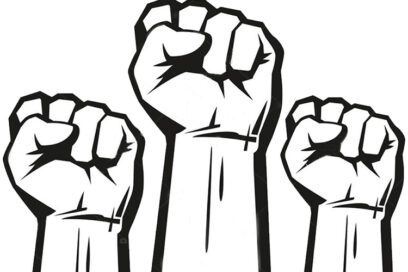They were not intimidated by the repressive forces stationed along that parade, alarmed by the open defiance of Spanish colonial rule. That May 1, 1890, Cuban workers had the honor of being among the countries that opened the Second International’s call to declare that date a day of worldwide mobilization for the legal reduction of the working day to eight hours.

This demand, previously endorsed by the Congress of the American Federation of Labor, had been supported by large demonstrations of American workers, such as the violently suppressed May 1, 1886, and the rally held days later in Haymarket Square that led to the infamous trial of anarchist leaders, whose unjust death sentences made them the martyrs of Chicago.
Many of the 3,000 Cuban workers who marched in 1890 were not indifferent to the conspiracy against their class brothers in the United States; on the contrary, they expressed their solidarity with the falsely accused in various ways. They formed a relief committee to raise funds to pay for the appeal to the U.S. Supreme Court to overturn the death sentences. They did not hesitate to donate part of their meager wages to raise several thousand pesos to financially assist the wives and children of the condemned. Another of their actions was a 2,000-person rally to demand clemency from the governor of Illinois.
Nothing stopped the executioners, and when the legal assassination was completed, the newspaper El Productor, edited by the prominent labor leader Enrique Roig San Martin, appeared: «History, that stern and eloquent teacher, shows us that emancipating ideas are not drowned in blood, and that the sacred tree of freedom, the more tyranny prunes it, the more luxuriant and full of life it grows».
The event had an extraordinary chronicler: José Martí, then living in the United States, who in his text Un drama terrible revealed the manipulation of the press in that country, presenting the accused as «harmful beasts», and showed how «the entire Republic» fought to maintain the sentence, despite the fact that the guilt of the accused had not been proven, stressing that the persistence of the sentence was «an example». For this reason, he denounced, the system acted «with a wolf-like fury so that (…) the condemned would not be torn from the scaffold».
The May Day parade in Cuba was organized by the Workers’ Circle, which stood in solidarity with the Chicago martyrs. In a manifesto, it expressed its determination to celebrate the date so that the aspirations of the oppressed in Cuba would be known.
They left from the old Campo de Marte (now Parque de la Fraternidad) and continued along Reina, Galiano, and San Rafael streets until they gathered at a training hall called Skatin Ring, located at Consulado and Virtudes.
There, 15 speakers took the floor, revealing the misery and exploitation to which they were subjected, raising the issue of the 8-hour workday, demanding equality between blacks and whites, speaking of unity and expressing support for the demands of various sectors, some of which were on strike.
That day of struggle, now 135 years old, opened the doors to many other mobilizations of the dispossessed masses of our country in demand of their rights, demonstrated the sense of solidarity of the Cuban workers and matured their awareness that each of these actions was part of the struggles of the oppressed of the world for their emancipation.
The workers of that time can be proud that the humble Cubans, doubly burdened by colonial rule and labor exploitation, were able to act with audacity and militancy from the first worldwide call for what would become International Workers’ Day.
Acerca del autor
Graduada de Periodismo. Subdirector Editorial del Periódico Trabajadores desde el …


